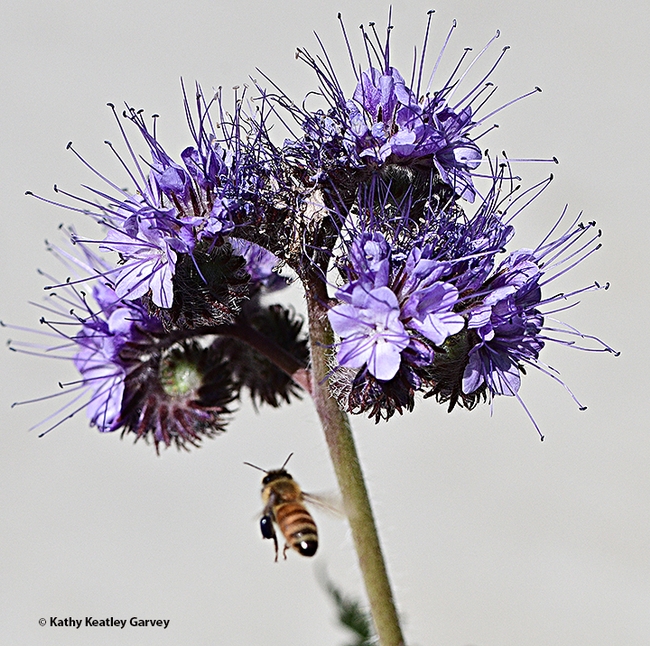
You're shaking my confidence daily...
--"Oh, Cecelia" written by Paul Simon of Simon and Garfunkle
If you think of the song, "Oh, Cecelia,' every time you pronounce Phacelia (the plant), you're not alone.
Pollinators, especially honey bees, bumble bees and syrphid flies, love the lacy Phacelia (Phacelia tanacetifolia) at the Joseph and Emma Lin Biological Orchard and Garden (BOG) near the Botanical Conservatory at the University of California, Davis.
P. tanacetifolia, a leggy three-foot plant clustered with light blue to purple flowers, is a member of the borage family, Boraginaceae. It's native to the southwestern United States and northern Mexico.
Where is the BOG? Back of Parking Lot 26 on Kleiber Drive.
What's in it? It's landscaped with several dozen species of heritage fruit trees and colorful mini-gardens.
A sign describes the garden. "This unique landscape showcases a slice of biodiversity in the heart of the central campus and is a hub for outdoor learning...The drought-tolerant plants growing in these beds are all from Mediterranean regions with similar summer-dry climates in Davis, including the Mediterranean, South Africa, Chile and Australia. The beds demonstrate the diversity of plants that can grow in the Sacramento Valley and provide students and campus visitors with a variety of species to observe and study."
So, basically, BOG is an outdoor laboratory for hands-on learning. "Classes perform biodiversity assessments, record insect observations and monitor the onsite weather stations," Instagram relates. Student employees, interns and volunteers at the Botanical Conservatory take care of the garden.
Among the flowers blooming in the BOG in the early spring, by color:
- Red: European red flax, Linum grandiflorum rubrum, an annual that's native to Algeria
- Yellow: tidy tips, Layia platyglossa, an annual that's native to California
--The seep monkey flower, Mimulus guttatus, native to California
--Lupine, Lupinus, native to North America. - Blue: Desert bell, Phacelia campanularia, an annual herb that is native to California and endemic (limited) to California.
- Lavender: Phacelia, also called Lacy phacelia, blue tansy or purple tansy (Phacelia tanacetifolia), native to the southwestern United States
--Lupine: Lupinus, native to North America - Red-Orange-Yellow: Blanket flower or Gaillardia (Gaillardia × grandiflora), native to North and South America
- Orange: California golden poppies, Eschscholtzia californica
But it's the Phacelia that's the big draw today.
Phacelia, you're breaking my heart...
Attached Images:
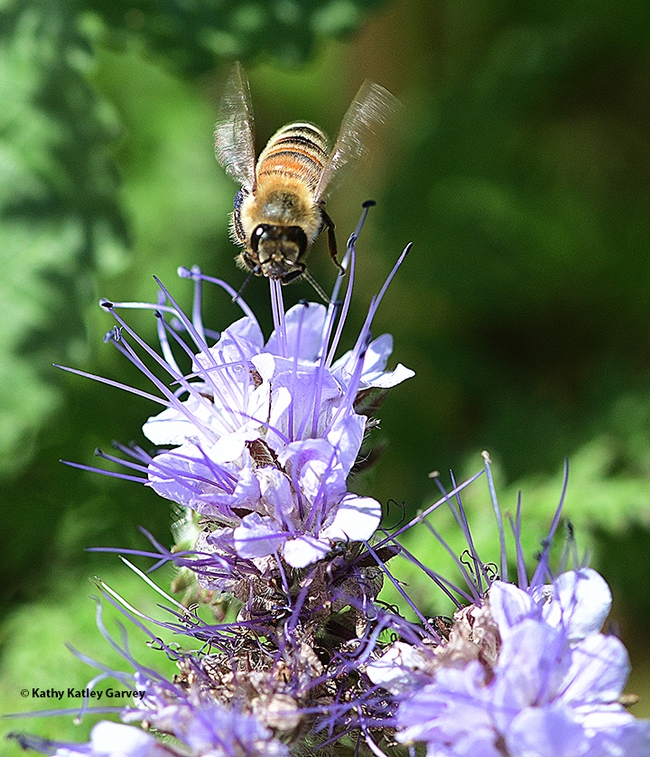
A honey bee forages on a lacy phacelia (Phacelia tanacetifolia) in the Joseph and Emma Lin Biological Orchard and Garden (BOG) at UC Davis. (Photo by Kathy Keatley Garvey)
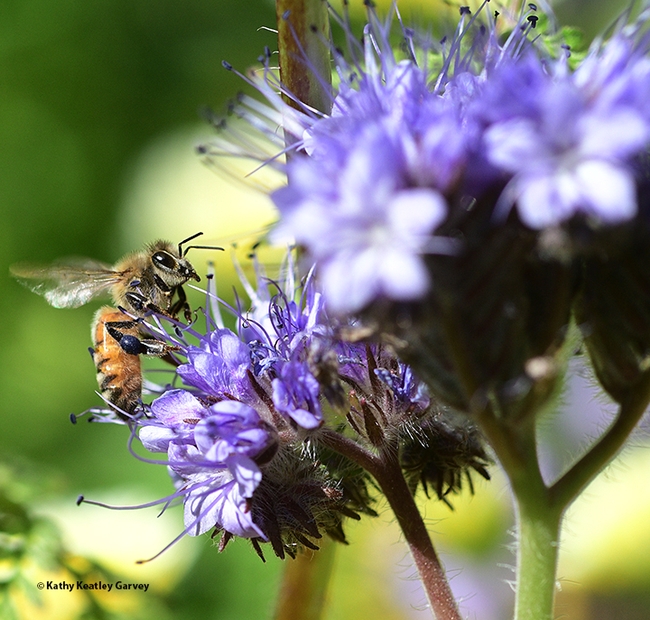
A honey bee gathering nectar and pollen from phacelia in the Joseph and Emma Lin Biological Orchard and Garden (BOG) at UC Davis. (Photo by Kathy Keatley Garvey)
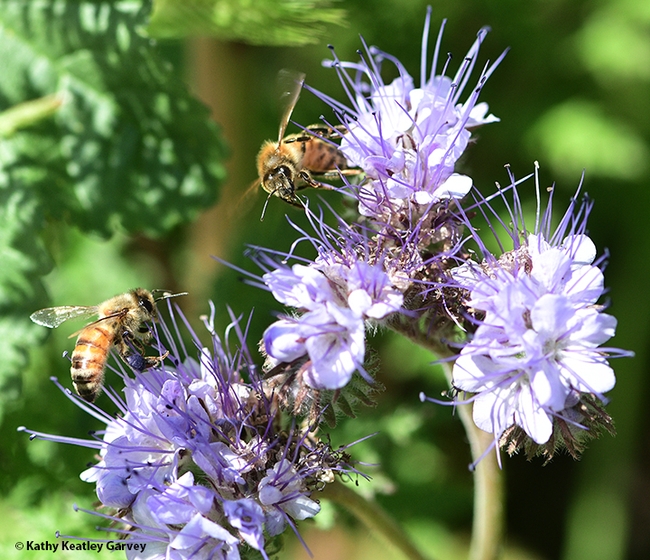
And now there are two! Another honey bee joins in the foraging on the phacelia. (Photo by Kathy Keatley Garvey)
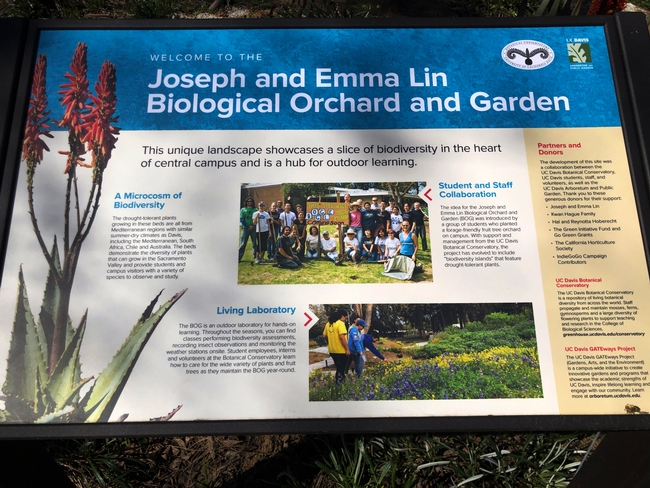
Signage in the Joseph and Emma Lin Biological Orchard and Garden (Photo by Kathy Keatley Garvey)
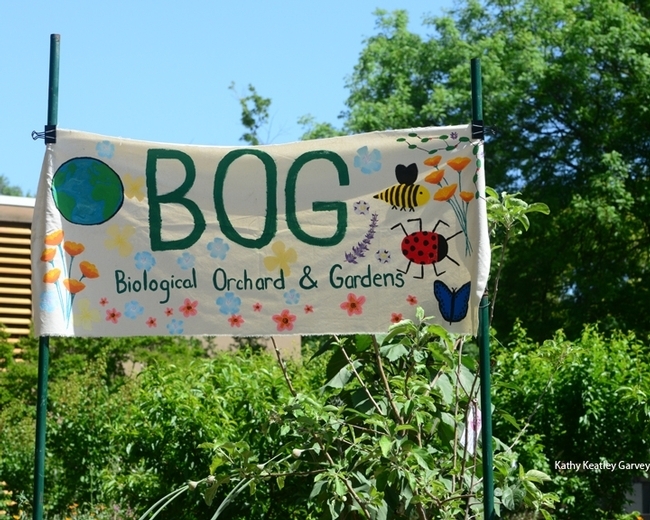
A colorful banner (now shredded by the recent storms) once greeted visitors to the Joseph and Emma Lin Biological Orchard and Garden. (Photo by Kathy Keatley Garvey)